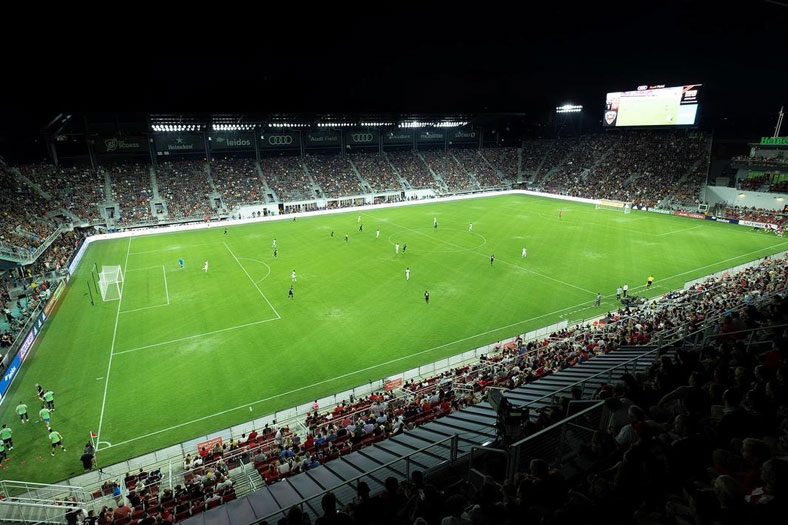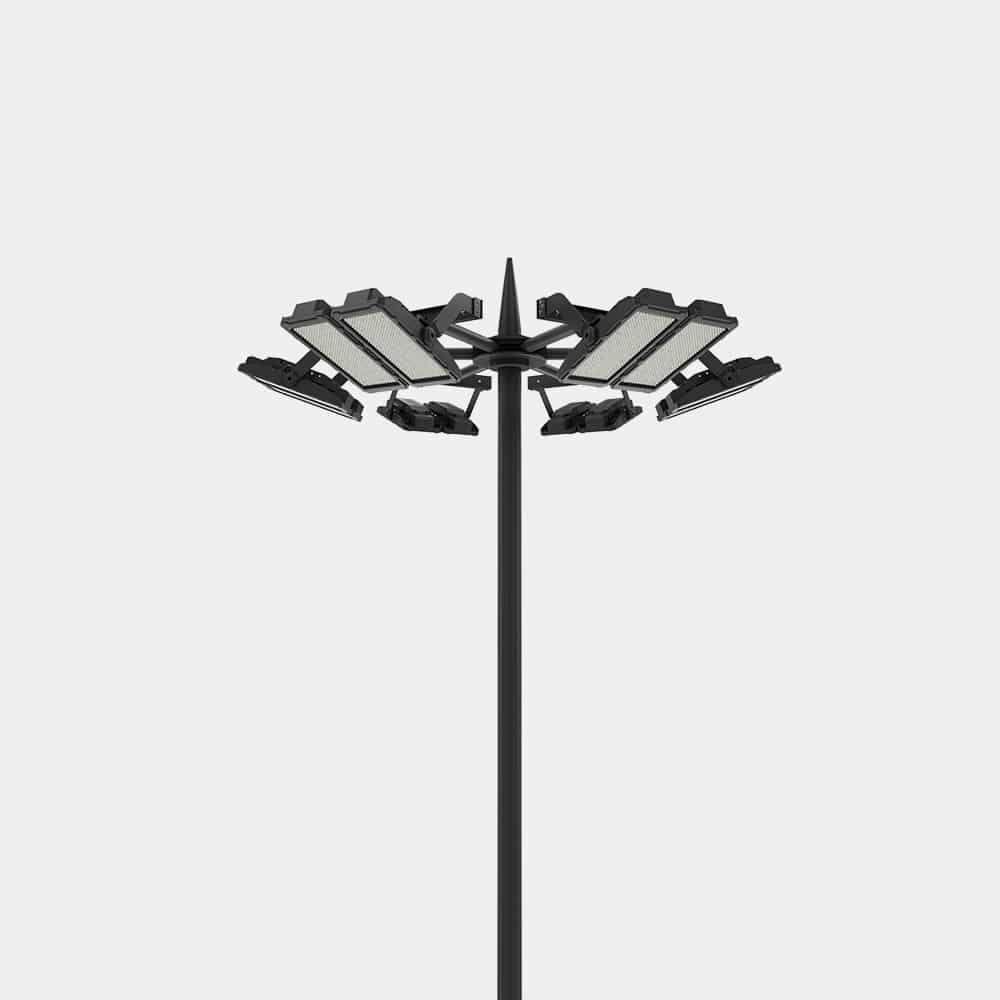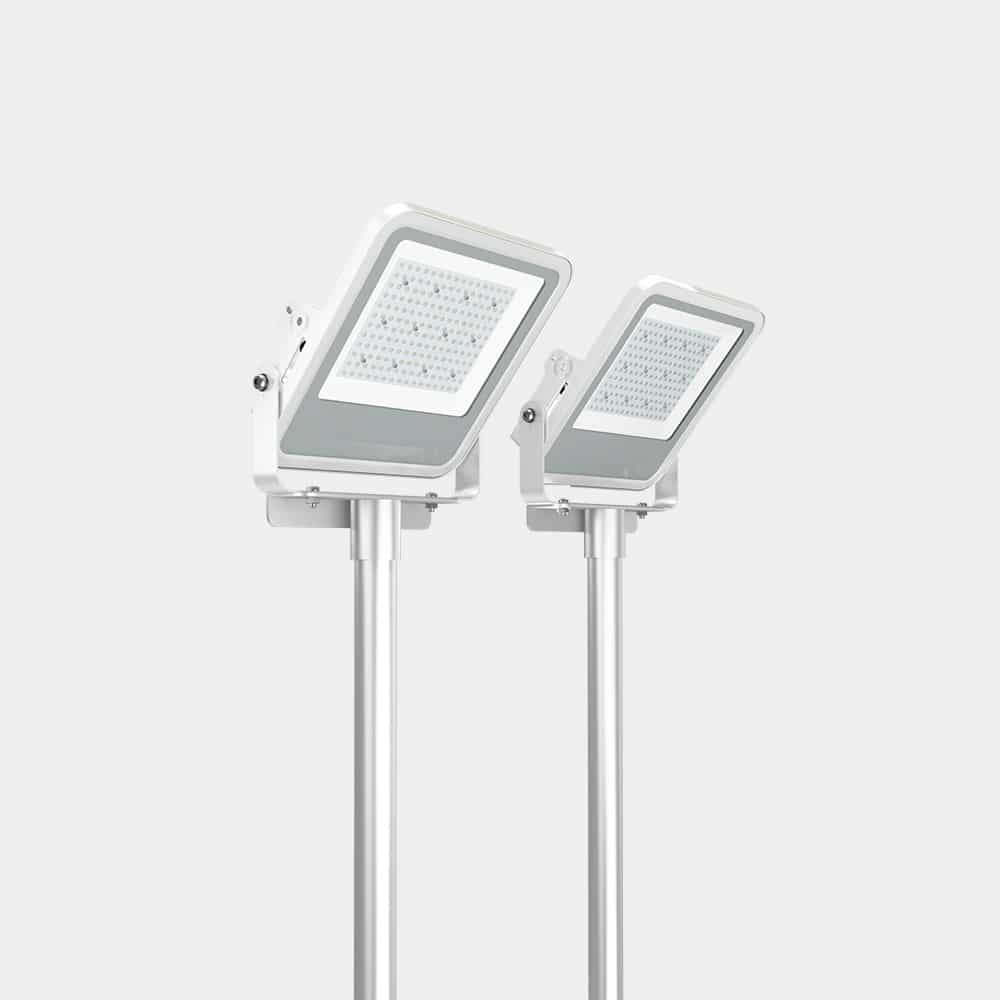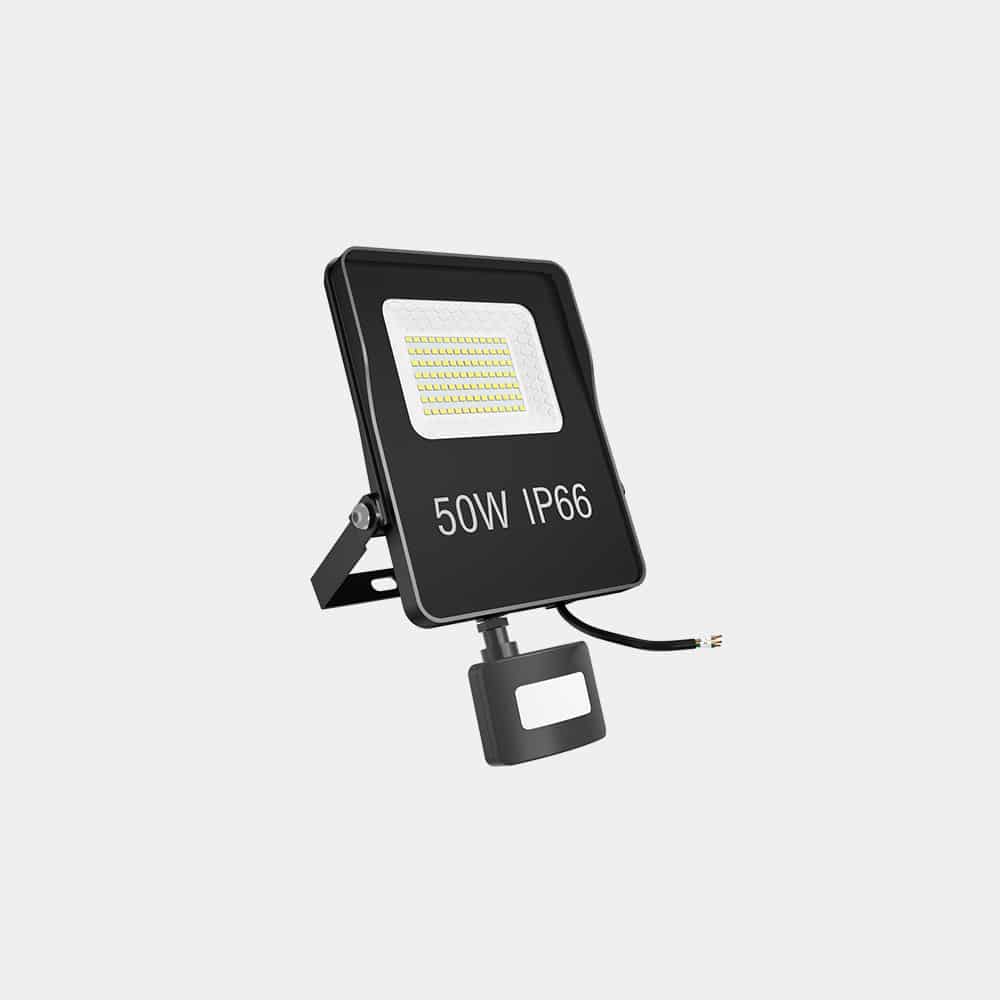LED Football Field Lighting
Football Field Lighting using ZGSM Lighting
Football is very popular in most countries around the world, and famous competitions include UFEA and FIFA, etc. With the continuous development of the world economy, more and more football fields have been completed and put into use. In order to ensure good visual conditions for players and spectators, the design and installation of football field lighting systems is crucial. Different event levels also have different lighting requirements to meet the needs of competition and training, while also providing a better viewing experience for the audience. Therefore, it is necessary to explain the different lighting levels and how we should plan and select our football field lighting to meet the corresponding lighting requirements while ensuring that the lamps can provide more uniform and stable lighting, and reduce energy consumption and maintenance costs. Here ZGSM let you know the details.

Lighting standard of football field lighting
| Football lighting | ||||||
| Outdoor | Reference area | Number of grid points | ||||
| Length-m | Width-m | Length | Width | |||
| Football | PA | 100-110 | 64-75 | 19-21 | 13-15 | |
| TA | 108-118 | 72-83 | 21 | 13-15 | ||
| Lighting class | Horizontal illuminance | RG | Ra | |||
| Ehor Ave-lx | U2 hor | |||||
| I | 500 | 0.7 | 55 | 70 | ||
| II | 200 | 0.6 | 55 | 60 | ||
| III | 75 | 0.5 | 55 | 60 | ||
| According to Standard of EN 12193: 2018 | ||||||
Key factors to consider For Football Field Lighting
Lighting level: You must make sure that a football field is properly lit before using it for nighttime games. The sort of play, whether or not spectators are present, and the size of the field all influence how much light is used. Without spectators, you’ll need at least 30 footcandles of horizontal target illumination on a typical 180 x 330-foot field. A professional-level stadium requires at least 75 footcandles to be lit. The requirement grows when fields get bigger or more spectators are added.
Poles: You must install the flood lighting in the proper location and with the proper mounting hardware in addition to having enough of it. Galvanised steel is required by the US Soccer Foundation for both the poles and mounting assembly. Place all poles at least 20 feet from the sidelines to reduce the danger of injury to players. Mount the lights high enough to prevent light from reflecting off the field itself and causing glare.
Glare and CRI: Finally, think about the light’s quality. Soccer is one of the nocturnal sports where two things are crucial. Glare is first. Glare on the field makes it difficult for players to perform successfully and might make it difficult for spectators to completely enjoy the game. Look for glare-reducing lighting options. The next is the CRI: the higher CRI the better. By enhancing the Color Rendering Index (CRI), it can improve visual perception and a more immersive gaming experience.
- Illuminance: The illuminance of a football field refers to the light intensity on the surface of the field, usually measured in lux. Illumination requirements vary for different competition levels and venue types. Generally speaking, according to the EN12193 standard, the following are common football field illumination requirements ranges, Class I-500lux, Class II-200lux, Class III-75lux.
- Dimensions: The dimensions of a football field refer to the length and width of the field. FIFA (FIFA) stipulates that the size of a standard football field is 105 meters to 110 meters long and 68 meters to 75 meters wide. The design and layout of the lighting system should take into account the dimensions of the field to ensure that the lighting is even and suitable for the competition.
- CRI (Color Rendering Index): CRI is an index between 0 and 100, which is used to describe the ability of the light source to restore the color of the object. In football stadium lighting, a lighting system with a high CRI value can more accurately reproduce the true colors of players’ uniform colors, stadium markings and other objects, and a higher CRI helps provide better visual perception and game experience. For high-level products, it is recommended to choose CRI85 or even higher.
- CCT (Correlated Color Temperature): CCT represents the color temperature of the light source, measured in Kelvin. In football stadium lighting, a higher color temperature is generally selected, usually between 5000K and 6200K. Higher color temperature can provide bright and clear light, which helps players and spectators to better observe and judge during the game.
- Uniformity: The competition area should have a higher uniformity, and the closer the value of the uniformity is to 1, the more uniform the light distribution is.
- High uniformity ensures players can see the trajectory of the ball and the movements of other players across the court. FIFA’s uniformity requirements for professional competition areas range from 0.5 to 0.7.
ZGSM’s football field lighting solution
ZGSM provides one-stop stadium lighting services. If you need to provide lighting facilities for a football stadium, we can provide customers with services such as lighting simulation, light pole design, luminaire power and lens selection. Based on the football field information provided by the customer and the location of the light poles (if determined), as well as factors such as the competition grade of the football field, we are able to tailor-make recommendations for the most suitable lighting solution. The solutions we provide will ensure compliance with EN12193 standards in terms of illumination, uniformity and glare reduction. Below are the football field layouts for 6 and 4 light poles (the 8 pole layout is not provided). ZGSM provides mature solutions for different light pole distributions, court sizes and competition levels. For example, for an 8-par standard size golf course (105*70m), we recommend 56 Glomax 900W golf course lights. The lighting simulation results show that the average illumination is 553lux and the uniformity U1>0.5/U2>0.7, which all meet the requirements of EN12193 Class I football field requirements. For a 6-par standard football field, we recommend 52pcs Zoom 400W floodlights with an average illumination of 200lu and a uniformity of 0.6. These also meet the requirements of Class II lighting level for the football field. Similarly, for the standard football field required by Class III, we recommend using 4 light poles to install 24 Zoom 400W to meet the corresponding requirements, contact us to get the corresponding report and quotation.

Btw, the durability of the lights selected is another crucial factor for the experts in charge of maintaining soccer pitches. Less time is spent replacing lamps or bulbs the longer a light lasts. Since football fieldlighting is frequently installed on a tall pole, changing the bulbs requires a lot of time and effort. It is crucial to have lighting that is durable and immune to damage caused by impact, weather, and dust. ZGSM improves longevity and durability through the following points.
- LED driver: ZGSM uses high-quality LED drivers to provide stable current to drive LEDs. Excellent LED drivers include Inventronics, Philips, Meanwell and Osram, which have high efficiency (low heat loss) and high stability, which can effectively extend the service life of the lamp.
- LED chips: ZGSM uses high quality LED chips, such as LED chips from Lumileds, Osram, Samsung. In addition to ensuring excellent brightness and color reproduction of the luminaire, high-quality LED chips have a long lifespan (L70), which increases the reliability and durability of the luminaire.
- Structure: ZGSM’s football stadium lighting solution adopts an integrated die-casting structure design to ensure good heat dissipation performance of the lamps. In addition, reasonable use of various sealing rings and protective covers can confirm and have good waterproof performance (IP) and impact resistance (IK). These can ensure that the lamps can maintain stable work under harsh environmental conditions, and resist the influence of external factors such as water, dust, vibration, etc., thereby improving the durability and reliability of the lamps.



